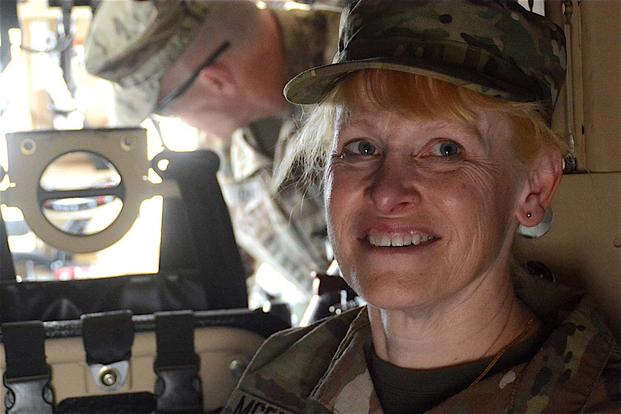Katrina McFarland, the U.S. Army's assistant secretary for acquisition, logistics and technology, retired Tuesday after serving only nine months on the job.
McFarland said she joined the Army in February 2016 to serve as the service's acquisition chief knowing that she would be in the job for just a short period of time, according to an Army press release.
Her position, a political appointment, would by tradition end with the election of a new president on Nov. 8, the release states.
"Until a new assistant secretary is nominated and confirmed by the Senate, Ms. Stephanie Easter, current ASA(ALT) principal deputy, has been designated to serve as the senior official for the Office of the Assistant Secretary of the Army for Acquisitions, Logistics and Technology," Army spokesman Lt. Col. Jesse Stalder told Military.com in an email.
Knowing her time would be limited, McFarland said she entered the office with specific ideas she wanted to implement.
"I felt there were things I could contribute," she said.
One new priority that McFarland spearheaded was the Army's Rapid Capabilities Office, which stood up Aug. 31. She had already helped the Air Force stand up its own Rapid Capabilities Office in a previous role as the assistant secretary of defense for acquisition.
McFarland described that office and the Army's own Rapid Capabilities Office as being similar to Lockheed Martin Corp.'s "Skunk Works."
"It's a means of achieving a quick, non-risk-averse delivery of capability," McFarland said. "It requires people who have skills to identify and understand risk well. It requires senior leadership to be there to afford them the direct insights they need to answer to senior leaders' needs that are oftentimes not a corporate view, which we tend to focus on."
The goal of the new office is to deliver those new capabilities to the force between one and five years, much faster than traditional acquisition -- which can take decades, she said.
McFarland started in government in 1986 as a general engineer at Marine Corps headquarters. Returning to a ground-combat community, she said, felt like coming home.
"My background is having spent 27 years of my life with the Marine Corps. Coming back to ground combat is lovely," McFarland said. "And also the whole mission of what we do in terms of national security runs in my blood."
Secretary of the Army Eric Fanning said he was impressed with McFarland's ability to move his modernization and acquisition reform agenda forward.
"Katrina has done a fantastic job of focusing the department's efforts on the challenges of acquisition, on streamlining acquisition, and on bringing Army modernization efforts to the forefront," he said.
"She may have only been in the Army a short time, but I've worked with Katrina in [the Department of Defense] and elsewhere within the Pentagon. She's a fantastic scientist and has been a trusted adviser. She'll be missed in the Army, but the legacy of her work lives on."
-- Matthew Cox can be reached at matthew.cox@military.com.



























